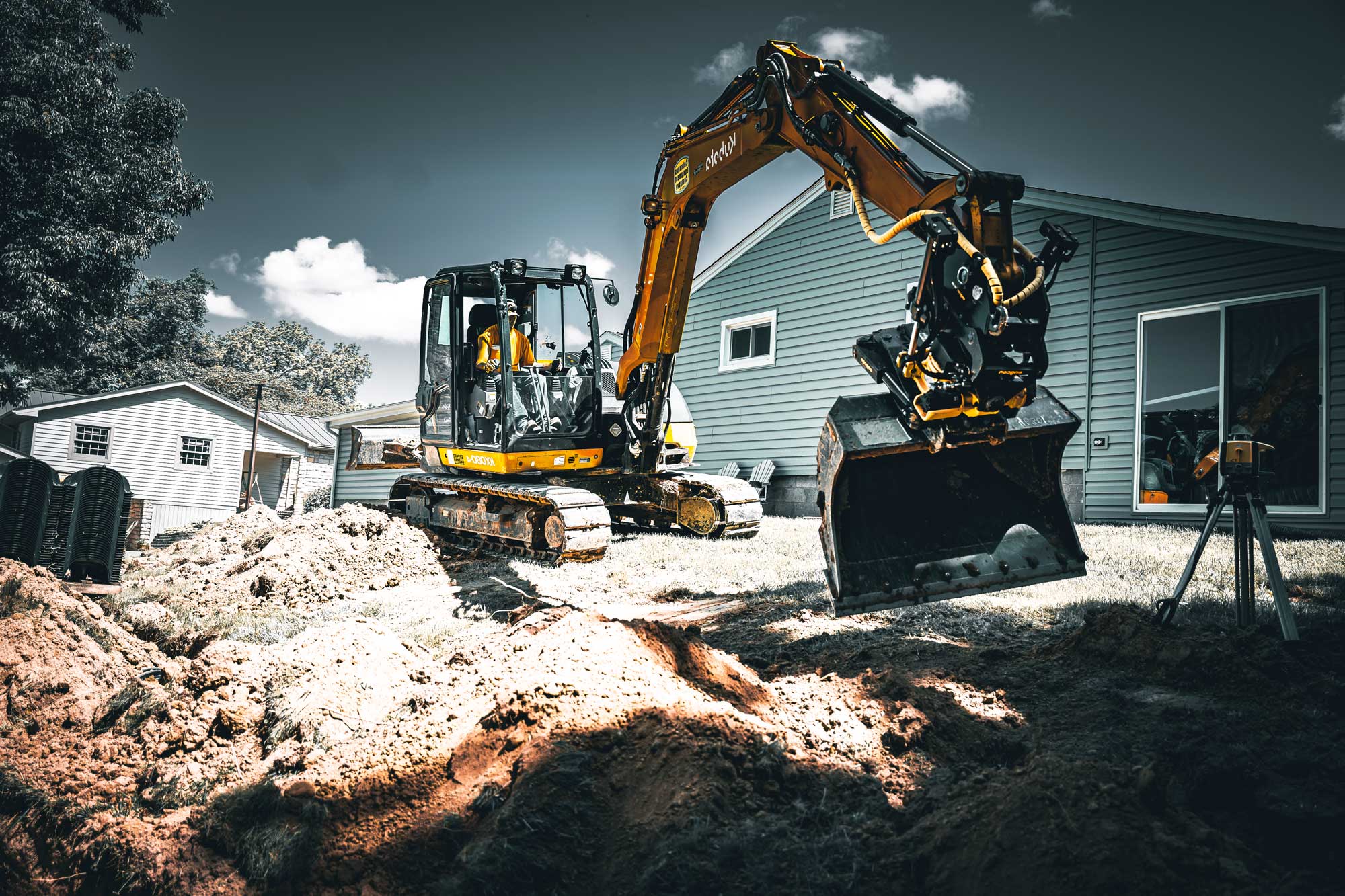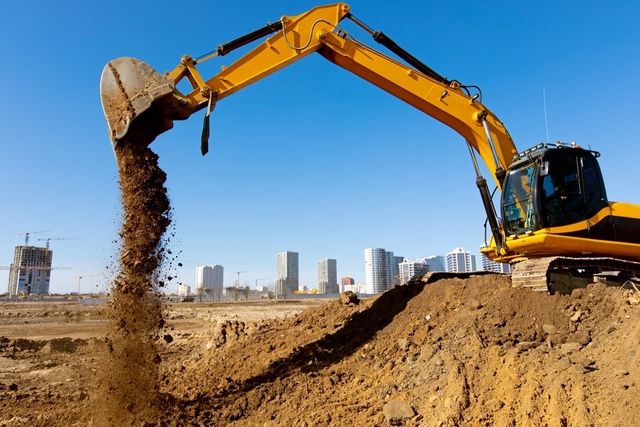Comprehensive Expedition: The Science Behind Superior Excavation Practices
The realm of excavation techniques is a domain where scientific research links with workmanship to uncover the enigmas hidden below the planet's surface. From old hand tools to modern hydraulic excavators, the advancement of excavation strategies has actually been a testament to human resourcefulness and technological improvements. What absolutely establishes premium excavation practices apart is a deep understanding of geological concepts, combined with the application of cutting-edge devices and methodologies. By checking out the science behind these practices, we can uncover the tricks that lie beneath our feet and value the accuracy and expertise that enter into every dig.
Evolution of Excavation Methods
Throughout background, the development of excavation techniques has played an essential role beforehand building and construction techniques and historical explorations. From the rudimentary devices made use of by our ancestors to the innovative machinery employed in modern-day times, the development of excavation methods has actually significantly changed just how we come close to numerous projects.
In ancient times, manual work with fundamental devices such as wheelbarrows, pickaxes, and shovels was the key method of excavation. This labor-intensive procedure limited the depth and range of excavations, frequently leading to slow progress and restricted access to specific sites. As worlds advanced, so did the tools and techniques utilized for excavation.
The Industrial Transformation marked a turning factor in excavation experiment the introduction of steam-powered equipment. This technology transformed the field, enabling faster and a lot more substantial excavations. In modern times, technology plays a pivotal duty in excavation, with improvements like GPS systems, drones, and 3D scanning improving precision and efficiency in the field. The development of excavation techniques remains to shape the method we build, discover, and recognize the globe around us.
Duty of Technology in Excavation

The assimilation of advanced technology has fundamentally changed the field of excavation, enhancing precision and effectiveness to unprecedented levels. Among the crucial technical innovations that has actually substantially affected excavation methods is the utilization of GPS systems. These systems enable for specific mapping of excavation websites, making it possible for drivers to properly locate below ground energies and frameworks. Additionally, using telematics in excavation equipment has actually allowed real-time monitoring of machine efficiency, bring about positive upkeep and raised operational performance.
Furthermore, the arrival of 3D modeling and simulation software application has streamlined the planning procedure for excavation projects. Drivers and engineers can now imagine the whole excavation procedure before beginning, determining potential difficulties and optimizing workflow. Along with this, the implementation of drones in excavation tasks has actually assisted in airborne surveys, volumetric dimensions, and site examinations with unequaled speed and precision.
Geological Concepts in Excavation
An understanding of geological concepts is important for guaranteeing the structural honesty and security of excavation websites. Geological factors play an essential role in figuring out the expediency and safety of excavation tasks (septic ohio). One key geological principle to consider is the kind of soil or rock existing at the have a peek at these guys website. Different soil excavating ohio types, such as clay, sand, or gravel, have varying levels of security and require different excavation methods. As an example, cohesive dirts like clay might need added assistance to stop collapses, while sandy soils may be vulnerable to erosion throughout excavation.
Moreover, the geological structure of the location, consisting of mistakes, fractures, and rock formations, have to be thoroughly evaluated to identify possible dangers and challenges. Excavating near mistake lines or unsteady rock developments can bring about instability and possible risks. By performing detailed geological surveys and evaluation, excavators and engineers can establish methods to reduce dangers and make sure the effective completion of excavation jobs. Ultimately, including geological principles into excavation methods is critical for achieving risk-free, effective, and sustainable outcomes.
Most Recent Devices for Excavation
In the realm of excavation practices, contemporary advancements in tools have revolutionized the efficiency and precision of excavation procedures. Among the newest tools making waves in the industry is the use of drones furnished with innovative imaging technology. These drones can supply comprehensive airborne surveys of excavation sites, providing real-time data on check my reference topography and potential risks. This info aids in far better preparation and decision-making throughout the excavation process.
One more cutting-edge device obtaining popularity is the application of 3D printing innovation for creating customized excavation tools. This permits the production of specialized devices that are tailored to the particular needs of a task, enhancing effectiveness and decreasing downtime.
Furthermore, improvements in materials science have brought about the development of more powerful and more durable excavation tools. lancaster trenching. Tungsten carbide-tipped excavator attachments, as an example, deal exceptional efficiency in tough ground conditions, enhancing efficiency on-site
Science's Effect on Excavation Practices

Additionally, scientific study on soil auto mechanics and geotechnical engineering has offered beneficial understandings right into soil habits, enabling excavation professionals to make informed choices regarding excavation techniques and dirt stabilization methods. In general, science proceeds to drive innovation and renovation in excavation techniques, making excavation jobs more reliable, cost-efficient, and lasting.

Verdict
To conclude, the advancement of excavation strategies has been greatly influenced by improvements in innovation and a much deeper understanding of geological principles. The current tools and tools used in excavation have actually boosted efficiency and precision in the area. The application of clinical knowledge has actually significantly boosted excavation methods, bring about more lasting and efficient methods for excavating different sorts of materials.
In the world of excavation practices, contemporary technologies in devices have actually reinvented the performance and precision of excavation processes. By leveraging scientific concepts, the excavation sector has actually been able to substantially boost efficiency, accuracy, and safety in excavation procedures. GPR enables excavation teams to non-invasively check and map subsurface structures, utilities, and prospective dangers, enabling them to intend excavation tasks with higher accuracy and decreased danger of accidents.
In addition, scientific research study on soil auto mechanics and geotechnical engineering has provided beneficial insights right into soil actions, enabling excavation specialists to make educated decisions pertaining to excavation techniques and soil stabilization techniques. On the whole, scientific research continues to drive innovation and improvement in excavation techniques, making excavation jobs much more effective, cost-effective, and sustainable.